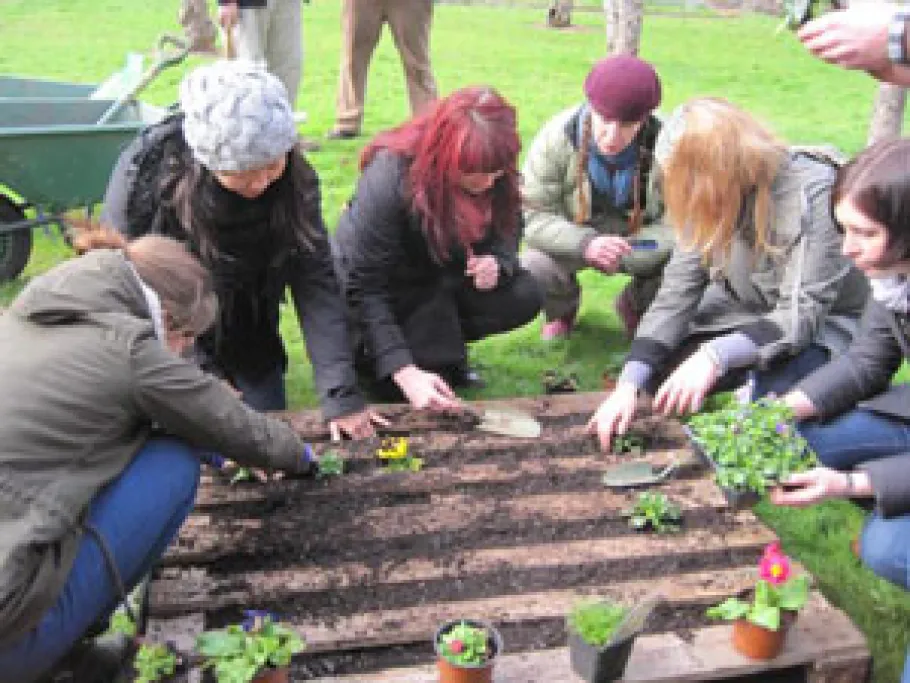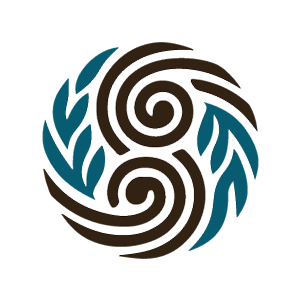
A 4-Day workshop, developed by Mihail Kossev
Permaculture design is more than just gardening, but a process of creating community. This workshop aims to emphasize the culture in permaculture.
CONCEPT
In recent years, we have seen a boom of permaculture courses all over the world. Permaculture has gone viral, it’s infectious. The idea of living in synergy with nature among people you admire and love has become the dream and ambition of many… This wave has spurred entire libraries of information about organic growing and food production, natural building and new ways of thinking about economy. When reviewing the resources currently available, we asked ourselves, what’s missing? What needs further development? Now that we know the principles and practices of land design, how do we make these “eco-village” dreams come true? The private garden is the physical incarnation of the gardener’s imagination in tango with the climatic conditions. A community garden is a physical representation of many imaginations and a visualization of the relationships among them. A group can acquire a beautiful space, but without agreement and an efficient social structure, they are prone to do damage to the land, even if they are using permaculture methods. How can a group of people synchronize their dreams effectively? What strategies do we use to design the social structure of our organizations to minimize conflict (failure) and maximize accomplishment (success)? As permaculture instructors and consultants, where to intervene in existing social structures to help our clients become happy with their system? This workshop offers students an opportunity to practice social permaculture design to better equip them for the realization of their dreams. We introduce design methods and tools that can create an atmosphere of full participation within a group of people working together on a project. It is helpful for those who are at any stage of project development – in its beginnings or amidst.
YOU WILL LEARN…
- How to work with social patterns to design effective organizational structures
- Techniques, group work methods and common practices for social cohesion within a permaculture system
- Consulting a group or organization on “people care” as a permaculture designer
- Encouraging social cohesion within an intentional or already existing community
- Design tools that are applicable to communities, organizations, businesses and public or private events.
SAMPLE SCHEDULE
This schedule is designed around the 4 steps to the “Dragon Dreaming” process: dreaming, planning, doing and celebrating. The design task for the group is to put together an event, ritual or performance that they will implement on the final day, using the tools and methods discussed during the workshop.
DAY 1: DESIGNING THE DREAM
The first day, students receive an introduction. The goal is for them to understand the rationale behind this course, as well as define some of their own dreams and aspirations. Morning session 1.1 Introductions to social dynamics and each other Afternoon session 1.1 Dragon Dreaming Morning session 2.1 Social patterns and organizational mapping Afternoon session 2.1 Forming a dream circle, finding the synergy within, a few fun games and exercises Evening session 1: Singing songs, and telling stories around the fire
DAY 2: GROUP PLANNING PROCESSES
The second day aims to put some structure towards some of the ideas. It covers already existing models for working within a group/community and all of their possible modifications. It revolves around the creation of social structures. Morning session 1.2 Group processes: decision making, reaching consensus, setting boundaries Afternoon session 1.2 Holmgren Principles, Social Zones and Sectors, Campaign strategies Morning session 2.2 Group processes continued: open space agenda setting, core values, etc. Introduction to assignment and short brainstorming session Afternoon session 2.2 Design time – visioning and planning, using mind maps and random assembly Evening session 2: Permaculture Entrepreneurship
DAY 3: WORKING BETTER TOGETHER
The third day focuses on the professional applications of permaculture social design. How can these skills be applied to day-to-day life? Some economic topics are covered in the evening session prior, but overall, this day is devoted to the maintenance of social designs. Morning session 1.3: Conflict, Justice and Non-Violent Communication Afternoon session 1.3: Consulting organizations: points of intervention, scales of permanence, aid projects in foreign countries Morning session 2.3: Design time – planning and designing, finishing the concept map Afternoon session 2.3: Design time – planning and preparations Evening session 3: Design time – preparations and rehearsal
DAY 4: RITUALS, CELEBRATION & APPRECIATE
This is the day the students get to express themselves and their ideas to the rest of the group. The day isn’t exactly divided into sessions as it is listed below, because some material, such as feedback techniques, will also be covered in 10-15 minute modules in between the presentations. Morning session 1.4 Group 1 presentation with feedback Afternoon session 1.4 Group 3 presentation with feedback Morning session 2.4 Group 2 presentation with feedback Afternoon session 2.4 Group 4 presentation with feedback Evening session 4: CELEBRATION!
WORKSHOP RESULTS
- Students see the importance of designing social structures and systems
- Those practicing permaculture professionally can apply these tools and methods in permaculture consultations, design workshops, events and especially aid projects
- Those without PDCs will receive an introduction to permaculture design tools (within social applications) and be able to apply these tools throughout their own disciplines
- Students come away with the confidence to resolve conflicts in group situations
- There is a feeling of satisfaction among everyone because they had fun, learned some new things and were able to express themselves creatively within a group
- Students have practiced how to create an atmosphere of full participation, get their ideas heard and actively listen and work with the ideas of others
- The hosts expand the diversity of events offered at their site
- Teachers receive feedback on some of these methods and techniques to improve their curriculums in the future
- Students, teachers and hosts expand their network and create opportunities for future collaborations
- Log in to post comments
